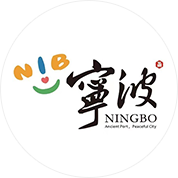In recent years, beyond China, Japan, Korea, and Southeast Asia, more and more experts and scholars in Europe and the United States have begun to study Wang Yangming, making significant breakthroughs in their research.
How did Wang Yangming’s thought spread to Europe and America, gradually revealing its strong scholarly vitality and becoming an important intellectual resource for mutual learning between civilizations? What kind of appeal has enabled Yangming Mind Learning to transcend more than five centuries of history and still shine brightly on the global stage?
Recently, a reporter from Ningbo Daily Group interviewed Cai Liang, Executive Dean of the School of Foreign Languages at Zhejiang University Ningbo Institute of Technology, Director of the Ningbo Key Cultural Research Base (East Asian Culture Research Centre), and Chief Expert of the Ningbo Social Science Research Base (Creative Transformation and Communication of Yangming Culture).
By tracing the origins and development of Yangming Learning in Europe and America, Cai Liang shared fascinating stories about key figures behind its spread.
From a historical perspective, with the Age of Discovery came Western colonial expansion, during which many missionaries to China introduced Chinese culture—including Yangming’s ideas—into Europe.
Since modern times, under the combined efforts of Western sinologists, missionaries, Chinese students studying abroad, and overseas Chinese scholars, the overseas dissemination of Yangming’s thought has become an important chapter in the history of Sino-foreign cultural exchange.
 Cai Liang at a seminar on Yangmingism. (Photo by Tang Yan)
Cai Liang at a seminar on Yangmingism. (Photo by Tang Yan)
So, who was the first to introduce Wang Yangming to Europe and America?
According to Cai Liang, the seeds of Yangming’s thought in Europe were sown in the 16th century in Portugal and Spain. Historical events closely linked to Wang Yangming were recorded in travelogues by diplomatic envoys to China.
Works such as the Portuguese Décadas da Ásia (1552) and the Spanish Juan González de Mendoza’s The History of the Great and Mighty Kingdom of China (1585) laid a historical foundation for the European understanding of Yangming’s thought.
The travel writings of Western diplomats and explorers in China marked the beginning of its spread in Europe.
In this early stage, the intellectual exchanges between Matteo Ricci and Wang Yangming’s later follower Xu Guangqi laid a practical foundation for the dissemination of Yangming’s thought in Europe.
From the 18th to the mid-19th century, France and Germany became focal points for its spread.
In 1741, the English edition of Frenchman Jean-Baptiste Du Halde’s General History of the Chinese Empire was published, bringing Wang Yangming into the English-speaking world for the first time.
As Chinese philosophy and religion became better known in Europe, Yangming’s thought entered the field of vision of Western sinologists, and “Wang Yangming” began to appear as an entry in Western works on Chinese studies.
From the 16th to the 18th centuries, the English-speaking world’s understanding of Wang Yangming mainly came from English translations of missionary sinological works.
 The lecture hall of Wang Yangming.
The lecture hall of Wang Yangming.
From the late 19th century to the mid-20th century, the spread of Yangming’s thought in the English-speaking world reached a new peak.
Missionaries to China, such as Timothy Richard and Alexander Wylie, missionaries to Japan like Basil Hall Chamberlain, and British missionary and noted sinologist Joseph Edkins, continuously introduced Wang Yangming’s life and philosophy to the West. His thought also reached other European countries, including the Netherlands and Italy, as well as North America.
In 1892, Dutch sinologist J. J. M. de Groot wrote about Wang Yangming and Buddhism in his English work The Religious System of China.
In 1899, German-American scholar Paul Carus published The Philosophy of the Japanese, introducing American readers to Wang Yangming’s influence on Japanese philosophy.
In 1913, Robert L. Lamberton’s A Study of Japanese Education Before the Meiji Restoration analyzed how Yangming’s ideas, via education, profoundly shaped Japanese society.
By then, Wang Yangming’s standing in East Asia’s “Confucian cultural sphere” was becoming well-known to Western scholars.
“In more than 500 years of overseas dissemination, the spread of Yangming’s thought in Europe and America shows two prominent features—its stage-by-stage development and the interweaving of different transmission paths,” Cai Liang said.
He identified three main paths for the spread of Yangming Learning in the West:
East Learning Spreads West – Western missionaries and scholars, inspired by Yangming Learning in China, introduced it to Europe and America.
East Crossing Westward – Yangming Learning reached the West indirectly via Japan.
Chinese Learning Advances Westward – Overseas Chinese scholars played an important role in its dissemination.
Cai Liang believes 1916 marked a turning point in the spread of Yangming Learning in Europe and America. That year, Kikuchi Kan published The Philosophy of Wang Yangming, a milestone in its Western reception.
What’s little known is Kikuchi’s connection to Ningbo—
In 1914, Kikuchi (1876–1968) published an article titled “Wang Yangming: China’s Idealist Philosopher” in the American journal Monist, introducing Wang’s life and key ideas, such as “the mind is principle,” “unity of knowledge and action,” and “benevolence as unity with all things.” He portrayed Wang as “a scholar, patriot, and reformer.”
In 1916, Kikuchi published his major research work, The Philosophy of Wang Yangming. The book consisted of a biography and translated excerpts of Wang’s writings. The biography was mainly based on the Chronological Biography of Wang Yangming by Wang’s Yuyao mate Qian Dehong.
Upon checking the contents, it is clear that Kikuchi’s Chinese source text was Collected Essentials of Master Yangming in Three Categories (Philosophy section), edited by Ming scholar Shi Bangyao (1585–1644), also from Yuyao. First printed in 1635, this work presented Wang’s philosophy, political achievements, and literary contributions.
Kikuchi not only translated Shi Bangyao’s text into English but also rendered his annotations, allowing readers to engage with them directly.
This makes Kikuchi not only a pioneer in promoting Yangming Learning overseas but also, inadvertently, an early promoter of Zhejiang scholarship abroad.
“As we trace further back, we see that the Maritime Silk Road was not only a route for global ocean trade, but also a ‘thought route’ for Chinese ideas to reach distant shores. Ningbo was undoubtedly a key starting point on this route, and the overseas spread of Yangming Learning is living proof,” Cai Liang said.
In his view, “Wang Yangming’s thought” is a signature concept of Zhejiang that has strong international recognition and influence. This is precisely why studying its overseas spread has both academic and real-world significance.
He stressed the importance of focusing not only on the creative transformation and innovative development of Yangming’s thought at home, but also on how it has been received, adapted, and transformed abroad.
One of the key reasons why Yangming Learning can transcend time, space, and language—and become an enduring emblem for Ningbo, Zhejiang, China, and even the world—is its “shareable value,” meaning its embodiment of values common to all humanity. This diversity of civilizations offers fresh perspectives and insights for China’s contemporary cultural exchanges with other countries.
Source: Yongpai
Reporters: Huang Yinfeng, Yang Yu (intern)
Editor: Ye Ke



